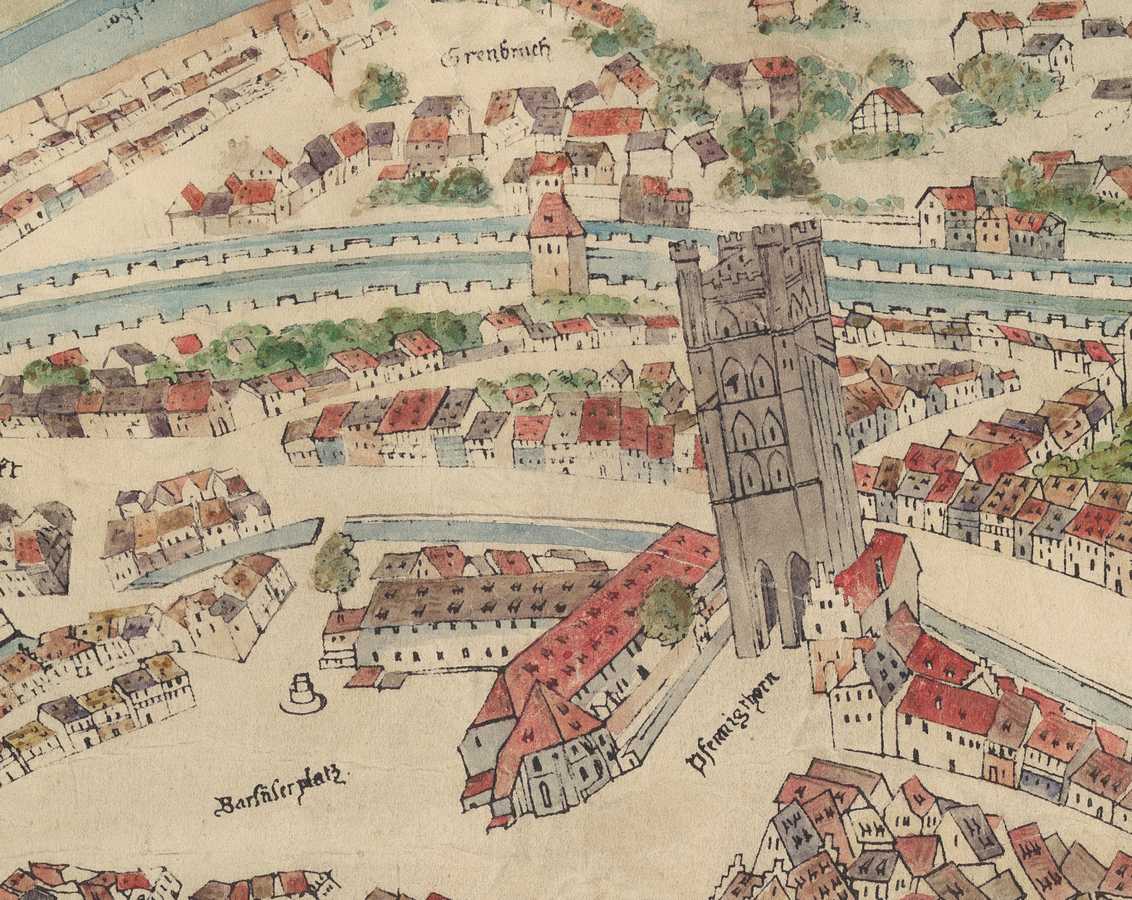Kléber square (part 3/4)
March 23rd 2019, by Matthias
This is the third part (see first article) in our series dedicated to the Kléber square, we find here a troubled century and the birth of an urban area. But we will also see that some issues are nothing new…
The square in the 16th century
This century sees the birth of the square more or less as we know it today in terms of space. A period of deep transformations as far as spirituality and mentalities are concerned, the 16th century starts with a bang with the writings of Martin Luther that will lead to the Reformation. Strasbourg was by the way one of protestantism’s birthplaces and largely helped it spread its ideas, in particular thanks to the printing press and the humanists. The Reformation suggests and announces its fair share of changes and this is our topic today. The Kléber square will not be spared.
Many religious facilities will be abandoned, or even destroyed. One of them, an imposing one, occupied a large part of the square: the Franciscans church.
Actually, that monastic order had largely invested the place. On top of the church, there was also a nursing home, a cloister and a school. Following the dissolution of the Franciscan brotherhood, all buildings are finally abandoned around 1524. The city then gets them back and quickly gets the chance to use them due to the forceful turn of events. Indeed, wars throw thousands of refugees at Strasbourg’s doors. They are welcomed and housed in these recently acquired premises. This lasts until 1530, when a fire damages the convent and some other buildings.
The demolition of these enclosures is just a question of time. Once this is done, a large space in the center is freed and the square is about to get a new face, closer to the one we know today in terms of space.
Beyond architecture, urbanism, space, something else in this text is an echo to the present. It is, of course, the matter of the refugees. Many times in the past has Strasbourg been a place of refuge, a haven, where different people, different cultures and beliefs used to meet and coexist. By nature, Strasbourg being the city on the roads, it has taken over a true role of crossing and played a part in having people meet from all over the continent. And today still, we are facing migration challenges. Today still, some people flee war and look for a shelter. Tomorrow, such populations will be even more important, with climate migrants. Such matters make the trade of populisms and they come back in force everywhere in the world. If Strasbourg is the European capital today, a Europe of peace first and foremost, this is precisely thanks to its history. That history that we evoke here and there during our free walking tours. That history I am, in part, talking about here, on this blog. Let us not forget about that history.



